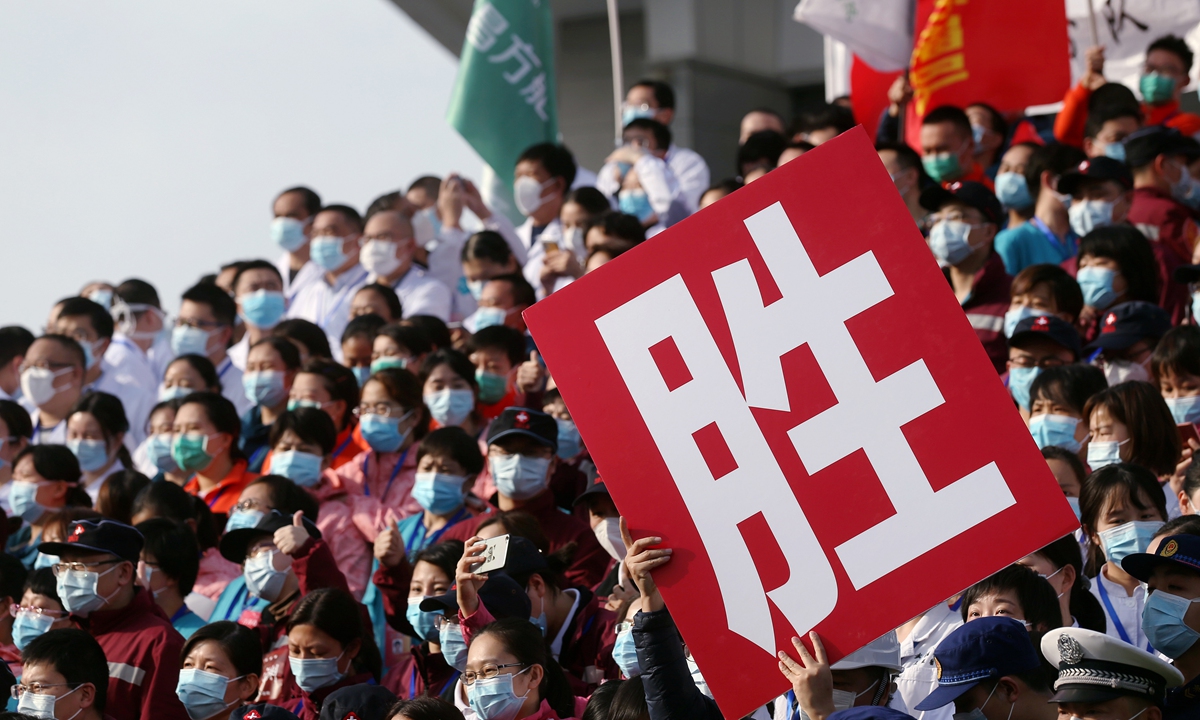
Central China’s Wuhan, a city once hard-hit by COVID-19 in early 2020, has recovered its dynamism. The city is summarizing lessons from its anti-epidemic efforts and improving its emergency response systems, including the release of information about emergencies within five hours and reserving 20,000 hospital beds for infectious diseases.

On Monday, the city government of Wuhan reviewed the draft of an “overall emergency plan of Wuhan,” which stipulates that authorities should release information within five hours and hold press conferences within 24 hours after a major emergency.
The draft plan is divided into four categories: natural disasters, accidents, public health emergencies and social security events. It also advises local authorities to hold emergency drills at least once every three years.
Wuhan’s current emergency plan was formulated in 2013, and some of it no longer meets the needs of emergency management. The city not only accumulated a large amount of solid experience, but also exposed shortcomings and problems amid the battle against COVID-19, so it’s necessary to sum up the experience and lessons learned to improve the plan, a local government official explained.
Wuhan has vowed to build a first-class public health emergency management system by the end of 2022, according to the city’s 14th Five Year Plan (2021-2025). By 2025, the city will have built a public emergency and medical rescue center as a modern international metropolis and one that’s capable of participating in international affairs.
Wuhan will reserve 20,000 hospital beds for infectious diseases, as well as medical equipment such as ventilators and extracorporeal membrane oxygenation.
Moreover, Wuhan plans to build several urban testing bases and national public testing platforms with a daily single testing volume of 10,000, so as to enhance cross-regional support capacity. Medical institutions will build P3 and pathogen detection laboratories for emergency infectious diseases.
The city has created four teams of more than 1,000 people each for epidemiological surveys, disinfection, detection and control. It has carried out emergency drills in areas such as residential communities and supermarkets.
Wang Guangfa, a respiratory expert at Peking University First Hospital, who went to Wuhan in the early stages of the outbreak, told the Global Times that China should train more high-level, application-oriented experts in the public health sector with strong academic backgrounds, rich professional knowledge and practical ability.
He also suggested that China should spend more on disease control and public health systems, and explore better management.
Wang Hongwei, a professor at the School of Public Administration and Policy of Renmin University of China, suggested that local and national authorities and medical institutions should enhance the capacity of their monitoring and early warning systems to detect and analyze such health emergencies in a timely manner.
Not only Wuhan but also the entire nation should introduce the “peacetime and wartime combination mode,” so as to balance national development and security, Wang said.
Many counties and cities don’t have specialized hospitals for infectious diseases and top-ranking hospitals with top doctors are mostly found in some metropolises, which could leave medical institutions unable to respond to health emergencies, Wang noted.
Also, the public should be encouraged to report emergencies, Wang said, suggesting that China can build a convenient public report channel based on big data.
Source: globaltimes


Comment